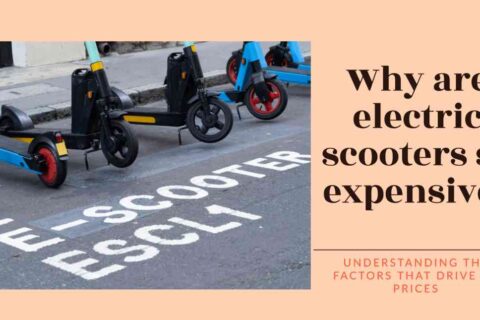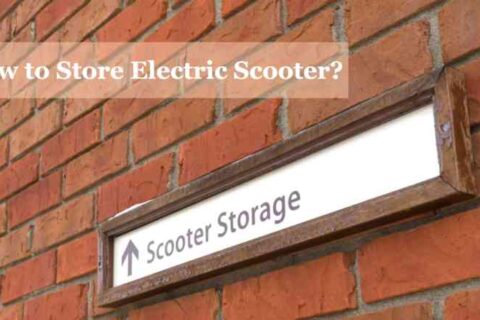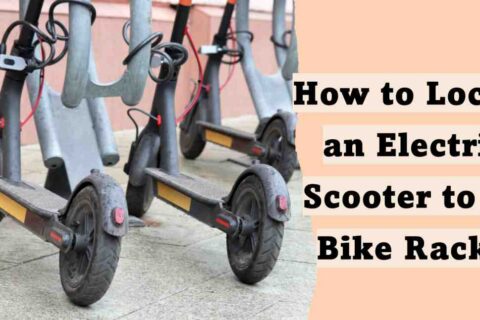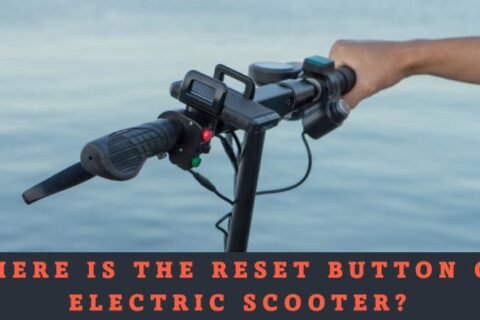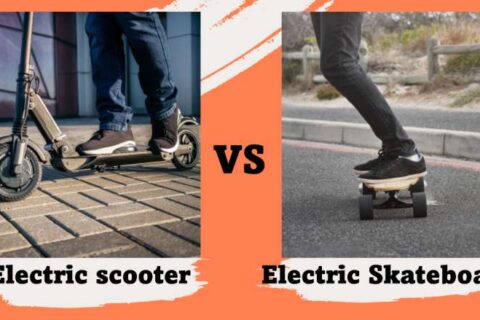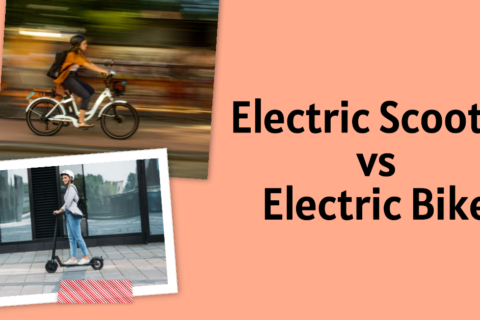Can I charge my electric scooter overnight? This is a question that many electric scooter owners or those thinking of buying one often ask.
Charging your electric scooter overnight might seem like a good idea to save time and effort in the morning. You can just plug in your scooter before going to bed and wake up to a fully charged battery.
But there are also risks with charging your electric scooter overnight, like overcharging, fire risks, battery damage, and shorter battery lifespan.
Key Takeaway
- Charging electric scooters overnight is possible and convenient, but it comes with both advantages and disadvantages.
- Pros of overnight charging include convenience, time-saving, and waking up to a fully charged battery.
- Cons of overnight charging include risks of overcharging, fire hazards, and potential battery damage.
- It’s important to know the charging time for your scooter’s battery and prevent overcharging to maintain battery health.
- Manufacturer recommendations suggest keeping the battery between 40% and 80% charge for optimal longevity.
- Alternatives to overnight charging include charging during the day, at work, or at public charging stations.
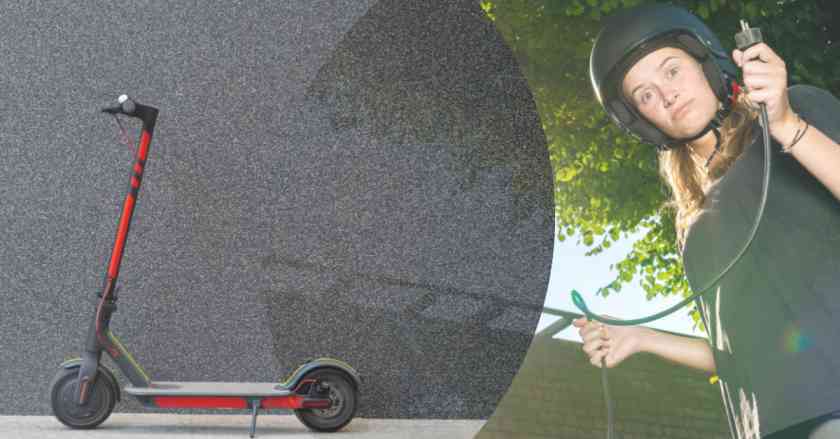
Table of Contents
ToggleCan I Charge My Electric Scooter Overnight?
Sure thing! Charging your electric scooter overnight is possible, but it’s important to know both the good and not-so-good sides. Let’s break it down:
Charging overnight has perks like being easy, saving time, and waking up to a fully charged battery.
However, there are downsides, including overcharging risks, fire possibilities, and battery damage.
To charge safely, use a smart charger, pick a safe spot, and avoid overcharging.
If you’re unsure, think about charging during the day, at work, or using public charging spots.
This way, you can enjoy your electric scooter without any worries.
Pros and Cons of Charging Your Electric Scooter Overnight
Charging your electric scooter overnight has some advantages and disadvantages that you should consider before doing so. Here are some of them:
| Pros | Cons |
|---|---|
| Convenience: Charging overnight eliminates the need to find a plug during the day and removes the hassle of carrying a charger or locating a charging station. | Overcharging: Overnight charging can damage battery cells, reducing capacity and lifespan, and even causing overheating or explosions. |
| Time-saving: Overnight charging frees up daytime for riding and ensures no unexpected battery depletion during trips. | Fire hazards: Risks of sparks, flames, or smoke from faulty wiring, poor ventilation, and external factors. Potential for property damage and danger to life. |
| Full battery: Overnight charging also provides optimal battery range and performance, along with potential cost savings through off-peak electricity rates. | Battery damage: Exposure to extreme temperatures or humidity levels can degrade battery performance, cause corrosion, and affect quality. |
The Best Practices and Safety Tips for Charging Your Electric Scooter Overnight
If you decide to charge your electric scooter overnight, you should follow some best practices and safety tips to minimize the risks and maximize the benefits. Here are some of them:
Locate the charging terminal or battery bay on your scooter:
First things first, find where your scooter gets its power. Look for the charging spot or battery area. Depending on your scooter, it could be on the handlebar, under the seat, on the side, or under the deck. If you’re not sure, check your manual or reach out to the maker for help.
Plug in the charger correctly:
Once you’ve found where to plug in, it’s time to connect the charger. Be sure the charger matches your battery’s power needs. The plug should fit well and not have any loose wires or exposed metal. And don’t use adapters or extensions that could mess up the connection’s safety. Keep it simple and secure!
Know how long it takes to charge an electric scooter battery:
Before you keep your scooter plugged in overnight, let’s talk about charging time. How long it takes depends on your battery’s size, capacity, and your charger’s power. It usually takes 2 to 12 hours for a full charge. Just watch your charger’s light or your scooter’s display to see how things are going. Keep an eye on it!
Prevent overcharging:
To stop overcharging, go for a smart charger with auto-stop. It’ll halt the power flow once your battery’s about 90% to 100% full. This shields your battery from too much load and heat. Also, don’t leave your scooter plugged in more than needed. Long charges can do “trickle charging,” slowly adding power. But this can hurt your battery in the long run. Keep it balanced!
Make the battery last longer and extend its lifespan:
First off, where you park your scooter matters. Find a cool, dry spot. Keep it far from the bright sun, heat, and moisture. Those things can mess with your battery, making it too hot, too cold, or even rusty. Also, watch out for really hot or humid weather.
Another important thing is how much you charge your battery. Keep it between 40% and 80%. That’s the best range for a healthy battery. Try not to let it go lower than 20% or go way above 90%. That strains the battery and might make it work for a shorter time. And don’t leave it fully charged or completely empty for ages. That can harm your battery for good.
Finally, give your scooter a spin regularly, like once a week. It keeps your battery in action and healthy. If you don’t use your scooter much, don’t leave it sitting for too long. That can make the battery lose power or get cranky.

Choose a good charger:
First, make sure it’s a good fit for your battery’s power needs. Check if the plug matches where you charge too. Don’t go for chargers meant for other stuff; they might not work right.
Quality’s a big deal too. Go for a charger made from good materials and parts. Look for ones with safety stamps and warranties. Stay away from cheap or fake chargers – they might have problems that mess with your battery’s health.
What your charger can do matters too. Find ones with cool stuff like auto-stop, lights, displays, or fans. These things help you keep track of charging, and stop it from going too far, getting too hot, or having problems.
Choose a safe location:
Make sure the place has good airflow. This helps cool things down and avoids overheating or fire risks. Keep your scooter away from flammable stuff like curtains or gasoline.
Second, go for a spot where you can easily see and reach your scooter. This way, you can keep an eye on it and step in if needed. Avoid hiding it away in a closet or locking it up, as that could up the risk of fires or theft.
Lastly, put your scooter somewhere steady and solid. This stops it from falling over or getting knocked around by kids or pets. And don’t place it on uneven ground – that could damage your scooter or charger.
Choose a suitable time:
When it comes to choosing the best time to charge your scooter, there are a few things to think about. First, look at how long it takes to charge. Make sure you’ve got enough time for a full charge before your next ride. Don’t unplug the charger too soon.
Also, consider how often you use your scooter. If you ride every day, charging at night could work. But if you use it less often, just charge it when you need to.
Check your electricity costs too. Charging during cheaper times can save you money.
And if you’re charging at home, pick times when other things aren’t using up a lot of power. This way, you won’t overload your circuit.

Manufacturer Recommendations for Electric Scooter Charging
Ever peeked at your scooter’s manual? It’s like a treasure trove of tips, especially for charging. It’s like a custom map just for your scooter model, showing the best voltage, current settings, and how long to charge, and a personalized plan just for you.
Think about your scooter’s battery like a fuel tank and each charge as a top-up. Keep the battery between 40% to 80% charged, that’s the sweet spot. It’s like sipping a drink instead of downing it in one gulp.
The charging indicator in a display helps you to notify the charge level and options for troubleshooting.
Picture this, One side is “Undercharging” (rarely going above 20% charge). On the other side, “Overcharging” (often above 90% charge). In the middle, you’ve got the 40% to 80% range – where your battery loves to hang out.
For an easy visual, check out our handy infographic. It’s like a simple guide that shows how to keep your battery happy.
Personal Insight:
I’ve found that aligning my charging routine with the manufacturer’s recommendations has significantly improved my scooter’s performance. Plus, visualizing the battery’s “sweet spot” has made understanding its needs a breeze.
Alternatives to Overnight Charging
During the day:
Charging your electric scooter in the daytime when you’re not riding or have some free time is a good option. It lets you keep a closer eye on charging and stops overcharging or fire risks.
Plus, using your scooter more often keeps the battery in good shape. But remember, it might disrupt your plans or activities. Also, you could face pricier electricity rates or fewer available plugs.
At work:
If your workplace is okay with it or has a place for it, charging your electric scooter there is a smart move. It’s a time-saver and no charging at home or carrying the charger. You’ll have a full battery for your ride back or other trips.
But, remember, there’s a flip side also, leaving your scooter alone could mean a risk of theft or damage. You might also share the charging spot with colleagues who have different needs.
At public charging stations:
If you’ve got public charging spots around, consider using them to charge your electric scooter. It’s a handy option that skips the hassle of finding a plug, carrying your charger, or worrying about it.
Some spots might even offer free electricity or perks. But there are some things to keep in mind, you might have to wait in line or share with others. Also, there could be fees or rules you need to follow.

Frequently Asked Questions (FAQs)
Can I use any charger to charge my scooter overnight?
It’s important to use a charger that matches your scooter’s voltage and current specifications. Using a charger not designed for your scooter can lead to damage or safety hazards.
How long does it take to fully charge an electric scooter battery overnight?
The charging time varies depending on the battery size, capacity, and charger output. Generally, it can take between 2 to 12 hours to fully charge an electric scooter battery.
Can I leave my scooter plugged in after it’s fully charged?
Leaving your scooter plugged in after it’s fully charged can lead to overcharging and potential battery damage. Using a charger with an automatic cut-off feature can help prevent this.
What are the risks of charging my scooter overnight?
Risks include overcharging, battery damage, fire hazards, and reduced battery lifespan. Overcharging can damage battery cells, while fire hazards may arise from poor ventilation or faulty wiring.
How can I prevent battery damage when charging overnight?
To prevent battery damage, use a smart charger with an auto-stop feature. Keep the battery between 40% to 80% charge for optimal longevity, and ensure proper ventilation when charging.
Can I charge my scooter during the day instead of overnight?
Yes, charging your scooter during the day is a viable alternative. It allows you to monitor the charging process and prevents the risks associated with overnight charging.
Can I charge my scooter at work or public charging stations overnight?
Charging your scooter at work or public stations overnight can be risky due to potential theft or vandalism. It’s advisable to charge during the day when you can supervise the process.
Can I charge my scooter outside in extreme weather conditions?
Charging your scooter outside in extreme weather conditions, such as intense heat or rain, can impact battery performance and safety. It’s better to choose well-ventilated indoor locations.

Conclusion
In summary, Can I charge my electric scooter overnight? is not a one-line answer. Charging your electric scooter overnight can be a convenient and time-saving option, but it can also pose some risks and drawbacks that you should be aware of.
To charge your electric scooter overnight safely and efficiently, you should follow some best practices and safety tips, such as using a smart charger, choosing a safe location, and preventing overcharging.
You should also consider some alternatives to overnight charging, such as during the day, at work, or at public charging stations, depending on your needs and preferences.



